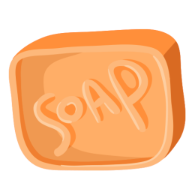- Joined
- Aug 26, 2023
- Messages
- 4
I was making a recipe today that uses a seawater solution for the liquid; I wanted to enter the salt and baking soda as a percent of liquid so I could scale it to my mold. However, I noticed the amount it told me to add was too low, and realized that was happening because I am using the Master Batch Lye toggle; it seems to be calculating based only on the additional liquid being added.
It'd be great if it also counted the water in the premixed lye solution since the calculations for my seawater are based on all the liquid, not just the amount I add afterward to get my proper liquid:lye ratio.
It'd be great if it also counted the water in the premixed lye solution since the calculations for my seawater are based on all the liquid, not just the amount I add afterward to get my proper liquid:lye ratio.


